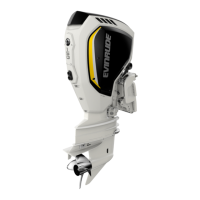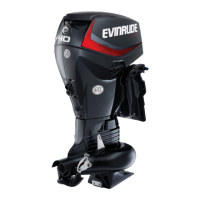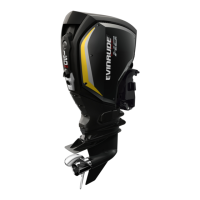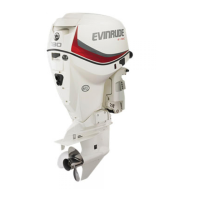27
BOAT RIGGING
CABLE AND HOSE INSTALLATION
1
Protective Sleeve/Conduit
Make sure a ll cable s, wiring, and hose s have
been identified and fitted to t he ap propriate
lengths. Refer to OUTBOARD RIGGING on p. 51.
Next, bundle the components that route to the out-
board with appro priate shielding, such as an
expandable “flexweave” sl eeve or a flexible con-
duit.
Battery Cables
When routing battery cables, be sure to:
• Route cables through the protective sleeve.
• Use the most direct p ath to route the batte ry
cables to the battery or battery switch.
Fuel Hose
The fuel ho se may be route d ou tside of the pro-
tective sleeve or conduit. Electric primers or man-
ual primers may not require this consideration.
Route f uel h oses with en ough slack to allo w th e
primer bulb arrow to point “up” during use.
Install t he primer bulb wi th the a rrow p ointing in
the direction of fuel flow to the outboard.
Connect the fuel supply hose from the fuel tank to
the fuel supply line at the outboard.
IMPORTANT: Do not permanently fast en this
connection until the boat 's fuel syste m has been
primed.
Oil Supply Hose
Evinrude E-TEC V4–V6 outboards use a single oil
supply hose connected to the outboard and to the
boat-mounted oil tank.
• Route the hose from the oil tank to the ¼ in. (6.4
mm) fitting of the oil su pply line at the lower
motor cover.
• Install the hose on the fitting using the prop er
size Oetiker
†
clamp.
Typical Engine Bracket DRC7798A
Flexible conduit installation 005138
1. Fuel supply hose and fuel fitting - 3/8 in. (9 mm)
2. Oil supply hose and fitting - 1/4 in. (6 mm)
003963
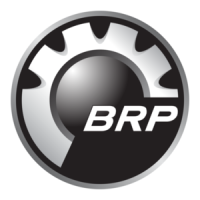
